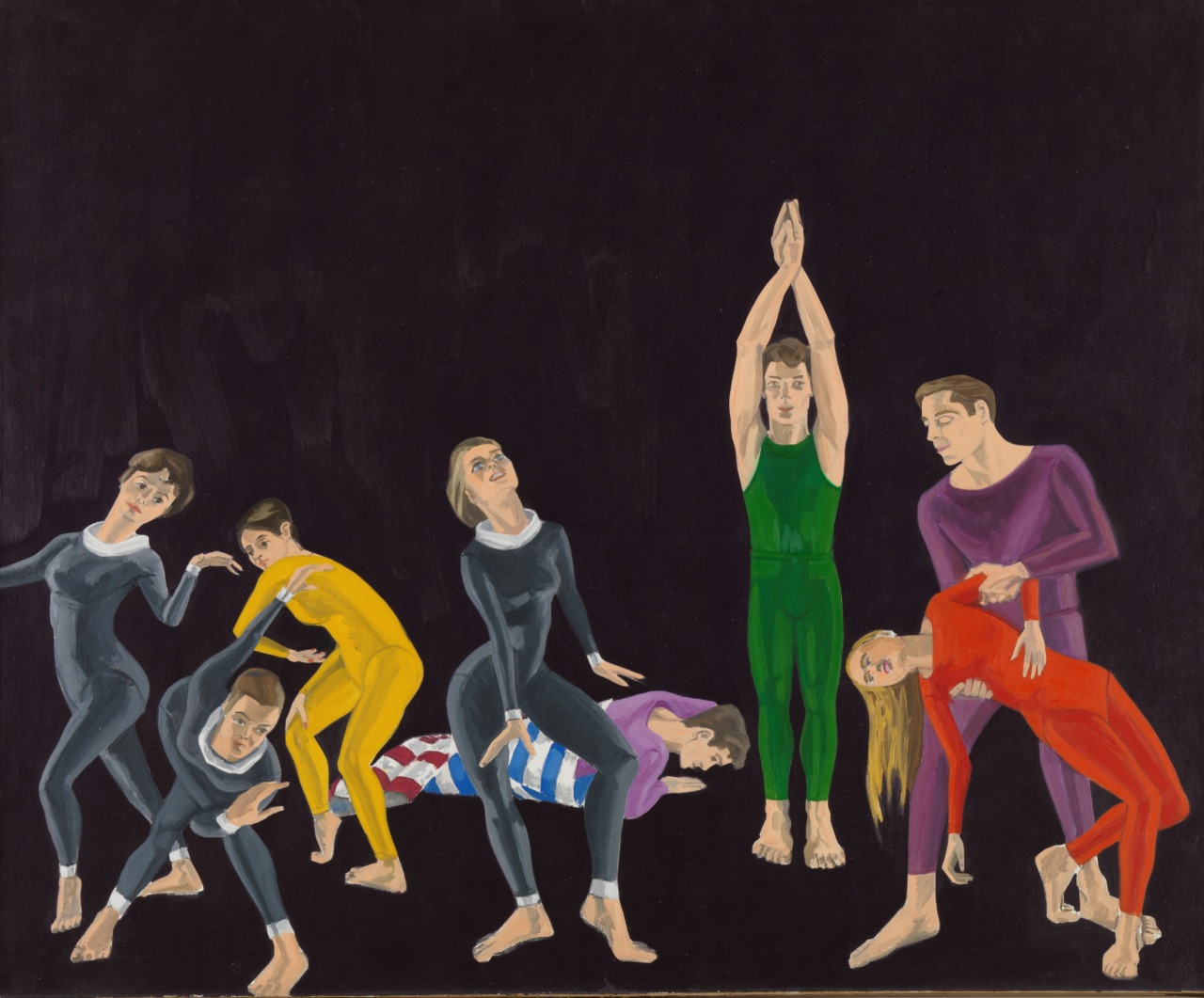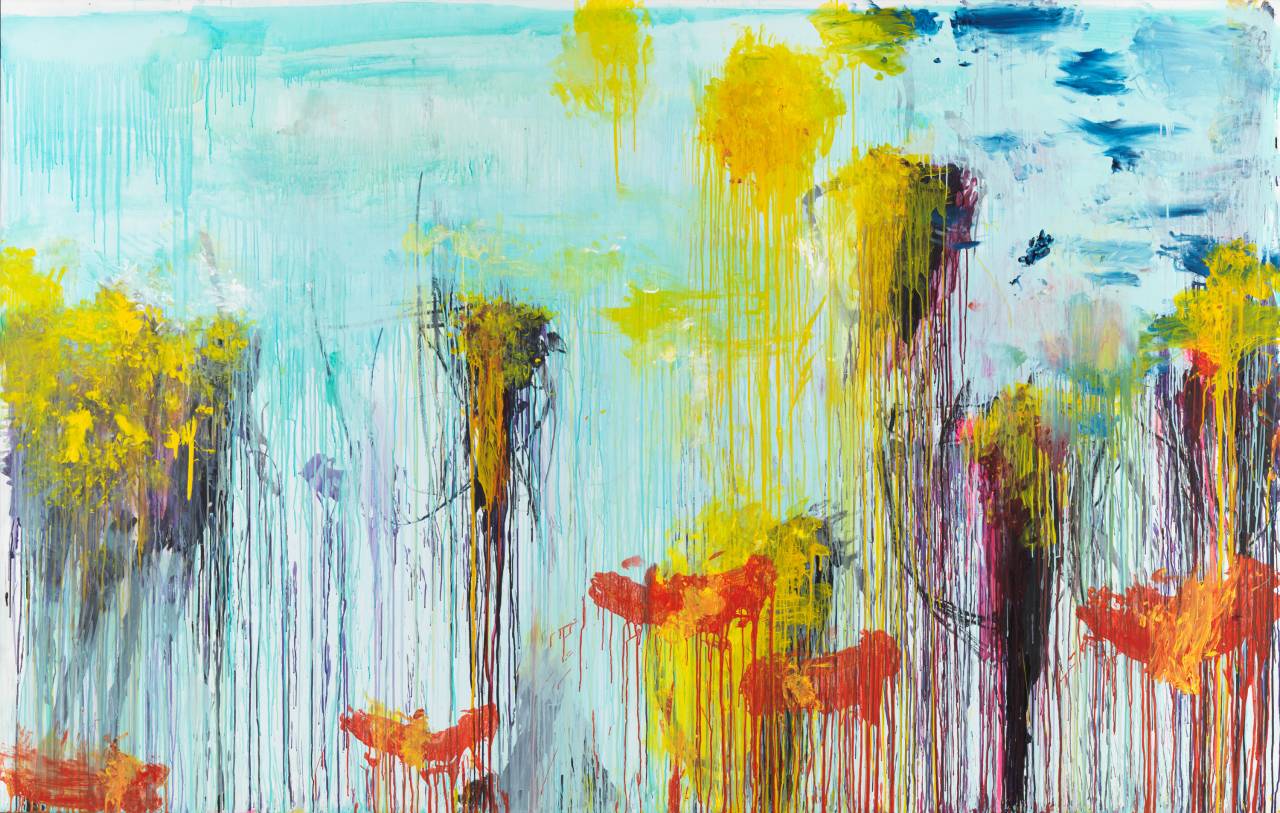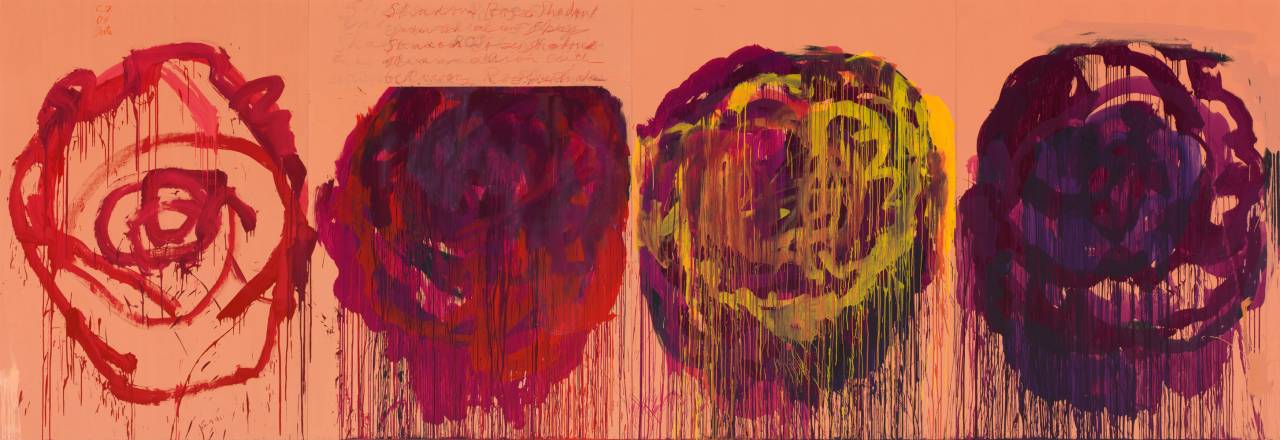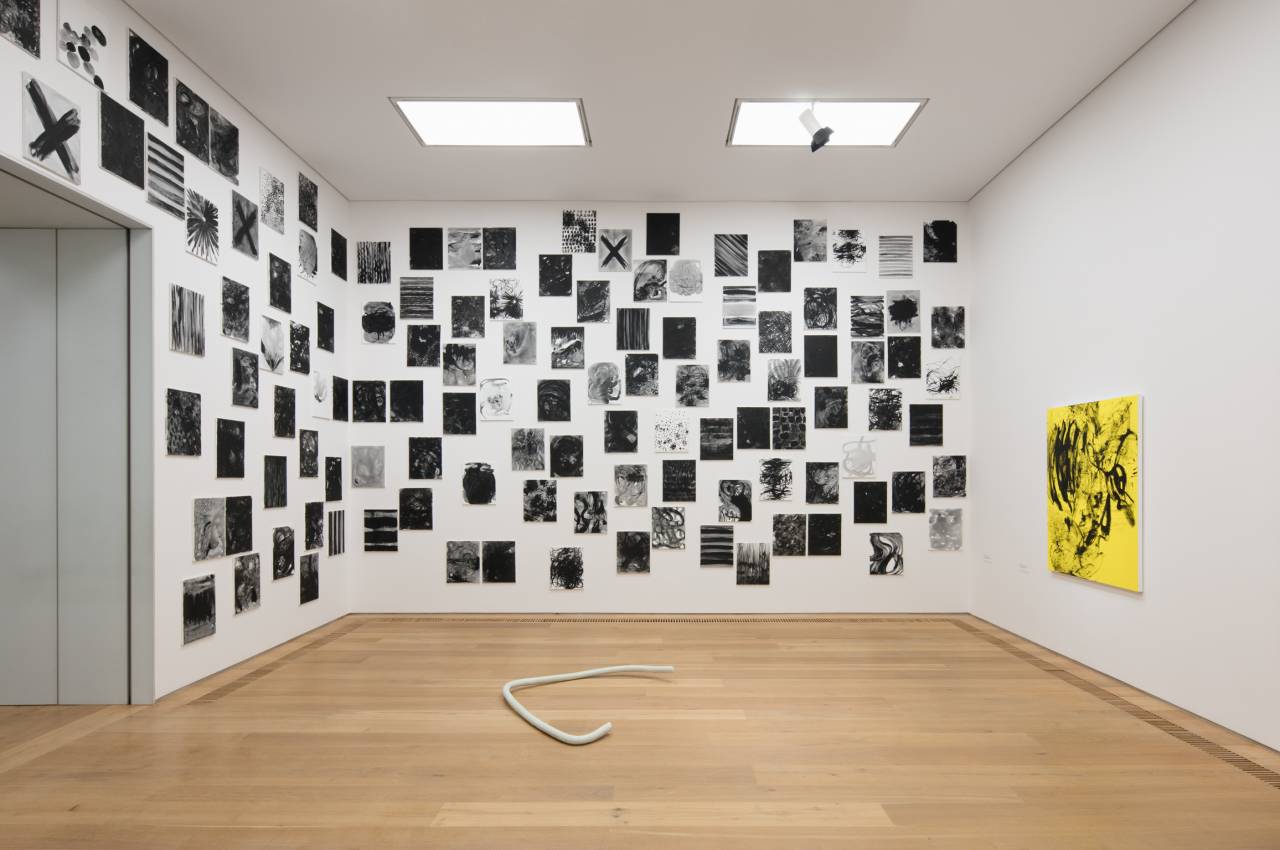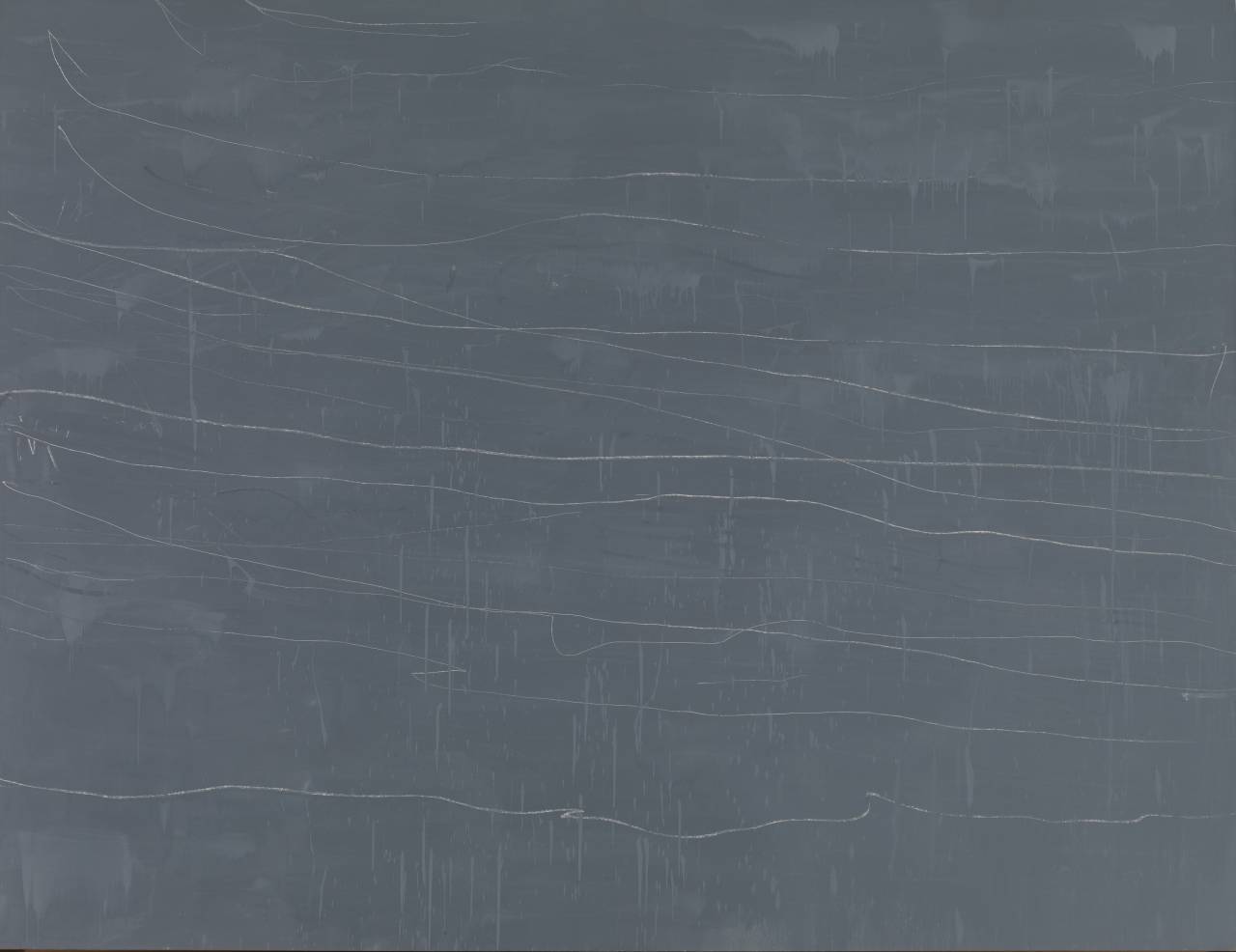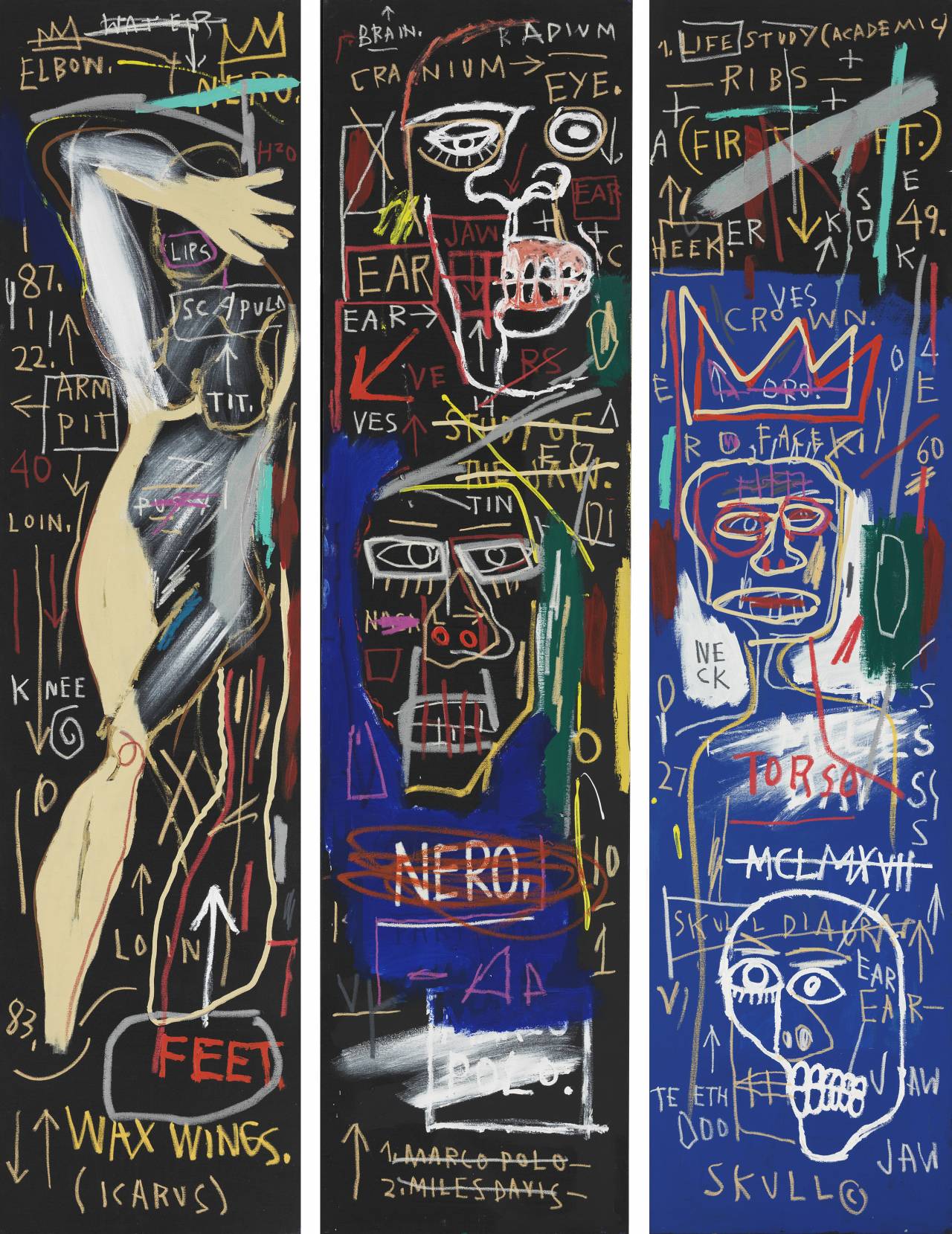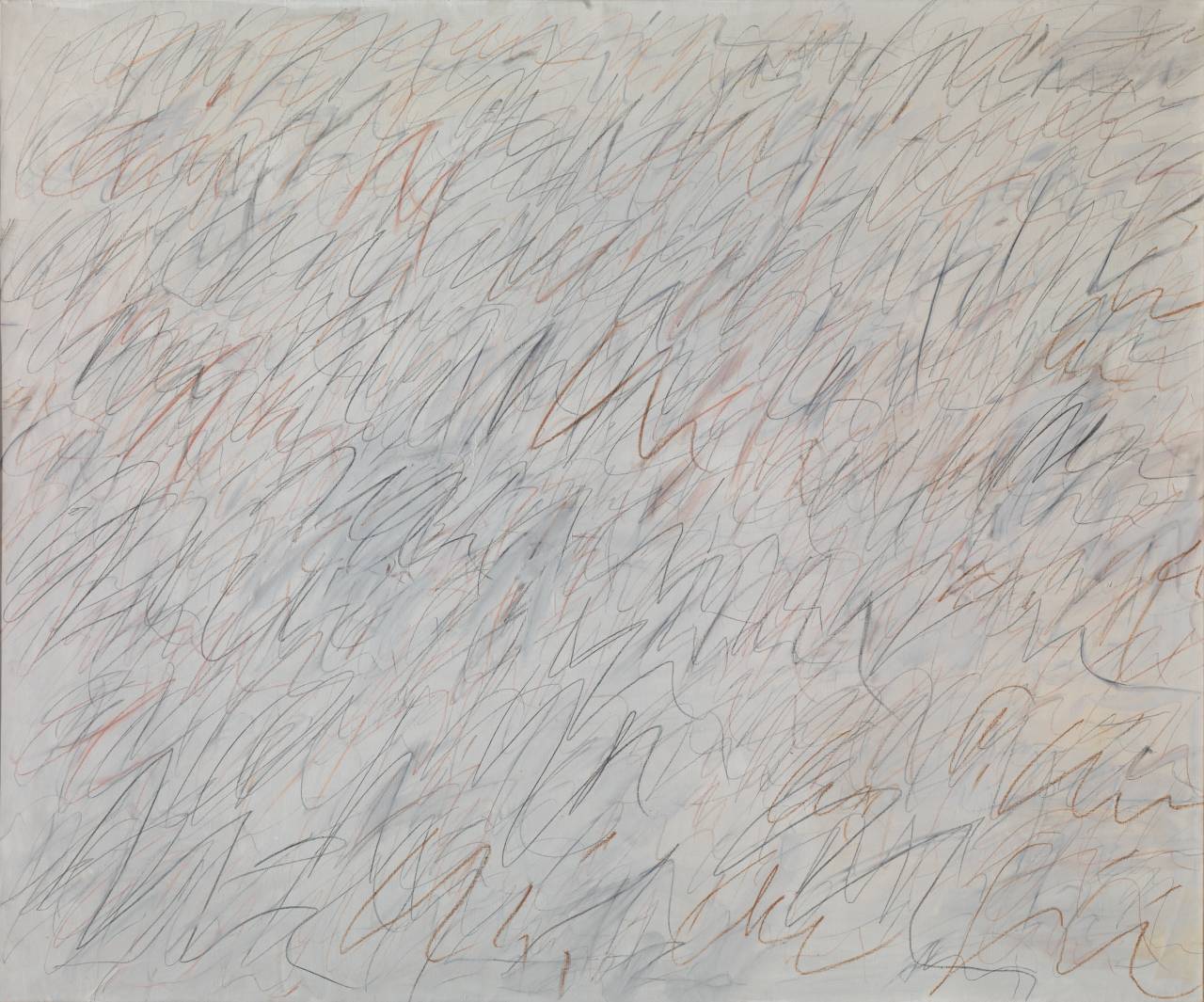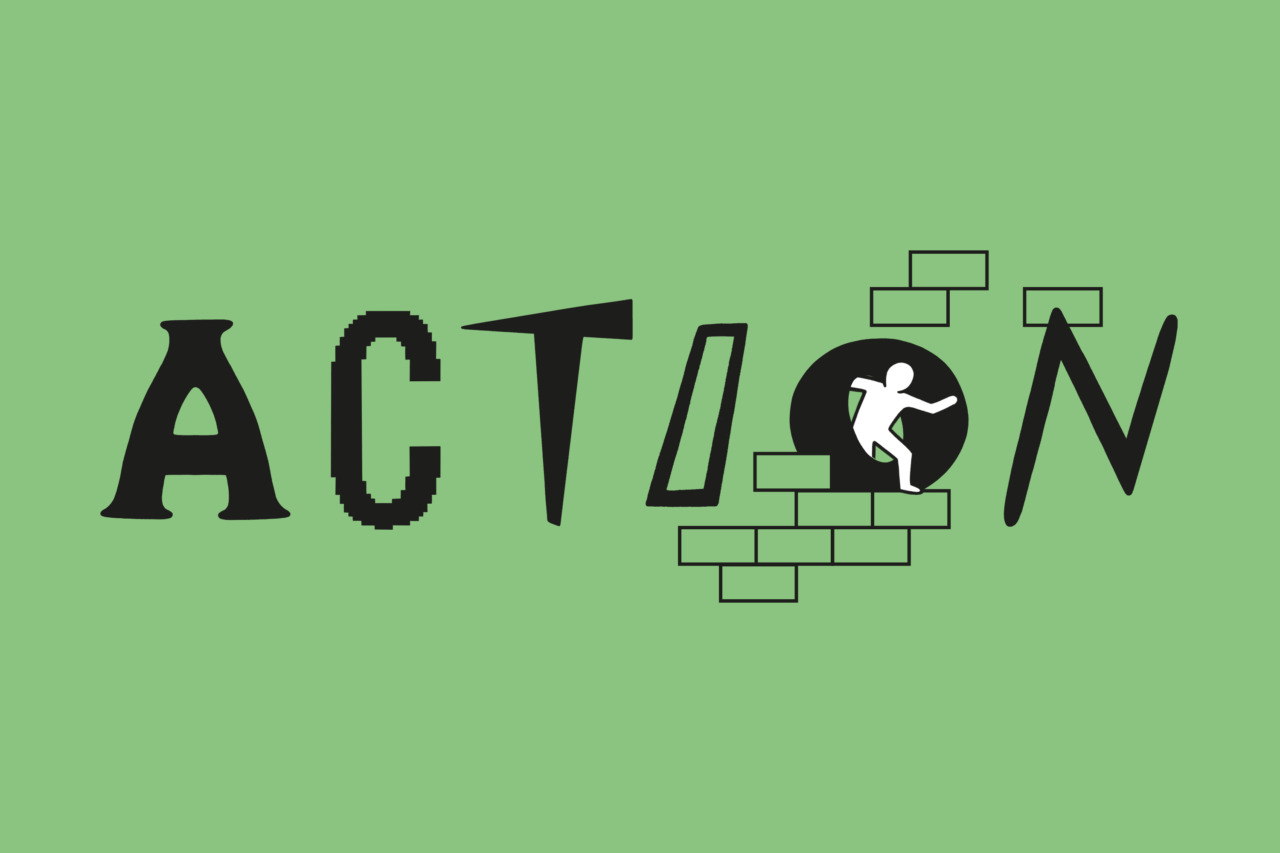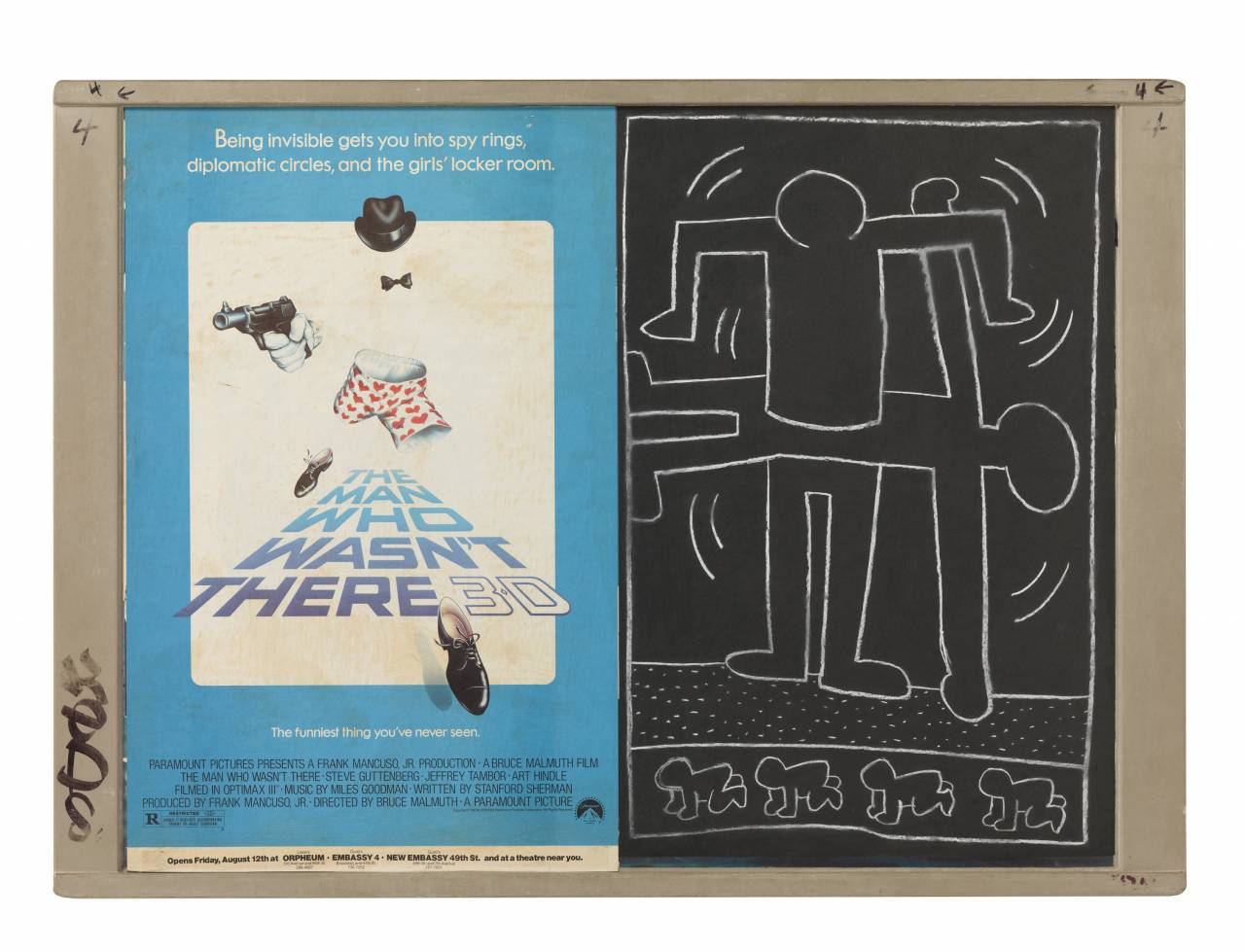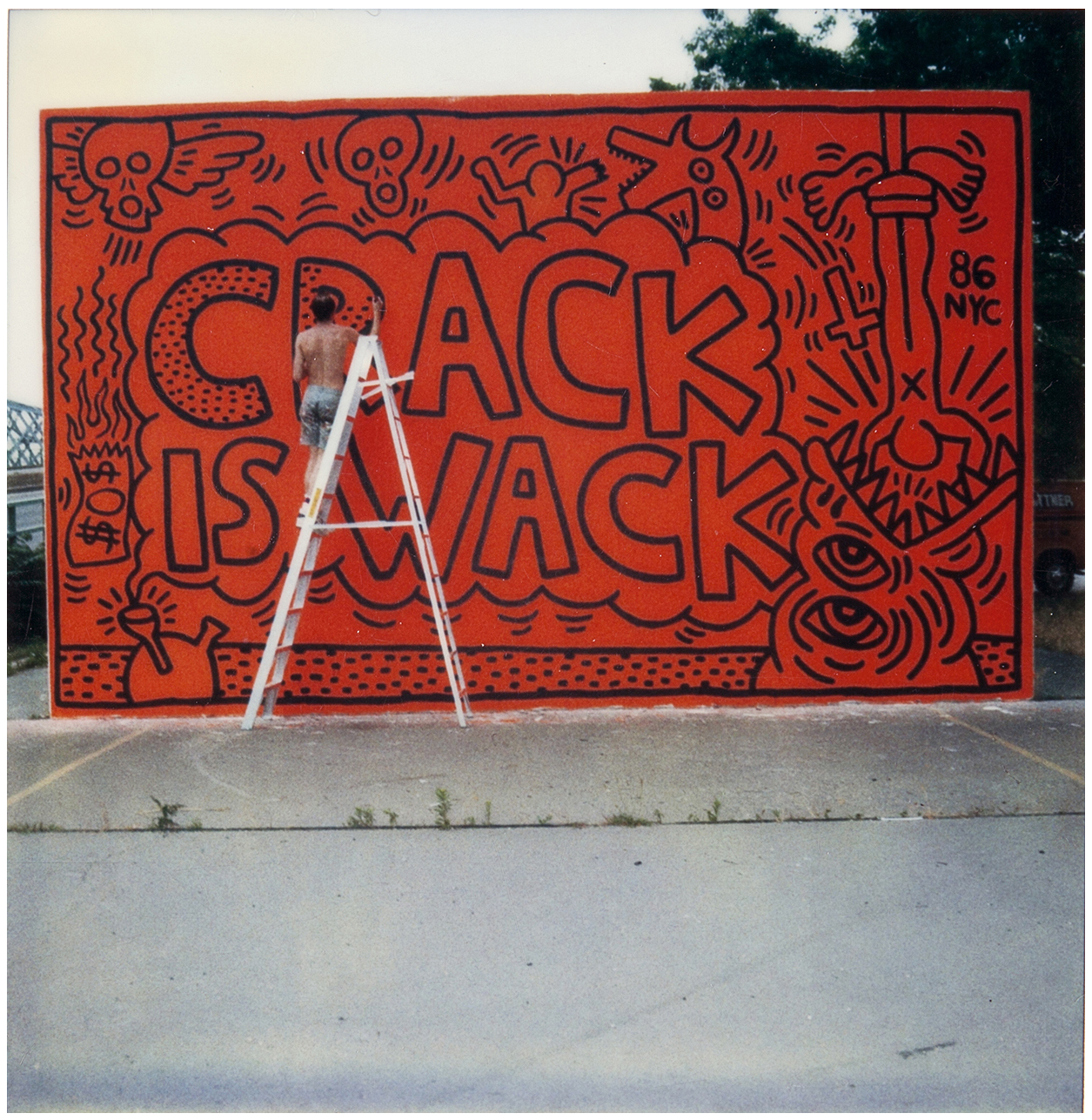Text & Image
Art is looked at—and sometimes can also be read! Individual words and letters, poems, artists’ books or illegible scrawls—how do texts and writing become contemporary art? What can be read, deciphered for content, what remains incomprehensible? And do you always need letters and words to convey a message?

Which texts inspire you right now?
Different texts can be the starting point for artistic production. Poems, pop songs, essays, manifestos—the path from text to image has a long history in the visual arts. Words, literature, poems, but also scientific texts are a source of inspiration for many artists. What is so attractive about a written story or event that we like to draw on it in various media? What lines have you been unable to get out of your head lately?
Which do you prefer: writing or images?
We use writing every day to communicate, describe or record things. It helps us to create structure and order. But sometimes it’s a hassle to decipher other people’s texts, and pictures seem to get to the heart of everything much more directly. Comics use this quite actively, often placing sparse text next to lots of image action. But text can also be the central motif of an image, as in the case of American artist Ed Ruscha. In his word pictures, the words appear as main characters with their own character traits. Have you ever painted a picture made only of letters? What happens between picture and text elements?
Title first or work first?
The interplay between text and image is not always just friendly or complementary. Sometimes the two are rivals. Let’s look at different titles of artworks, for example. Often they say “Untitled” or they don’t help you decipher the work; they are not purely descriptive, but have an ambiguous relationship to the work. As for example with Alexandra Bircken, Louise Lawler or Franz West. What is the funniest or most incomprehensible title of a work you have ever heard? What functions do titles serve? Why do they exist at all?
How varied is your expression?
Do signs always have to be legible or do they express something in other ways? Cy Twombly is known for mixing writing, signs, drawing, lines, and doodles in such a way that viewers are always puzzled as to whether the lines form a word, a letter, a motif, or “just” a line. Before we learn to write, we communicate with gestures—doodles—on paper. Do you think that we already want to express something here? Or is it simply a pure joy in the movement, the color and the trace we leave behind? Or something completely different? Try it out for yourself, how it feels to write without words.
What power lies in graffiti?
Images and text in public spaces are a well-oiled pair. But painting on walls is not always allowed. That’s why some street artists work at night and face heavy fines if they’re caught spraying and painting. Their condensed text-image messages often have great power. By now, street art has become so popular that some cities allow it in certain places and sometimes even pay artists to do it. Does the message and gesture of graffiti change when it is commissioned or even displayed in a museum? What messages would you like to share colorfully, big and loud with others in your city?
